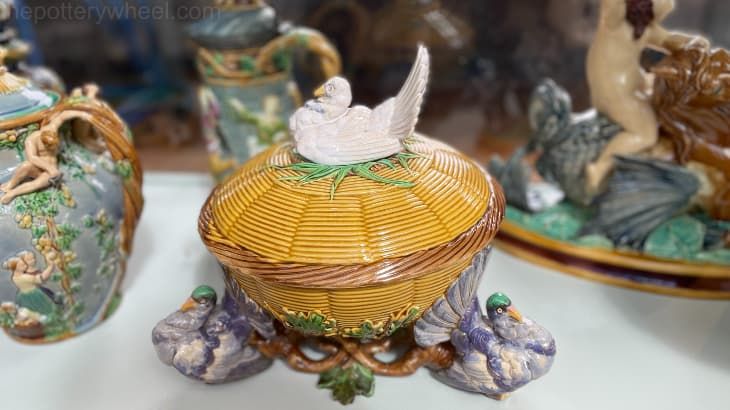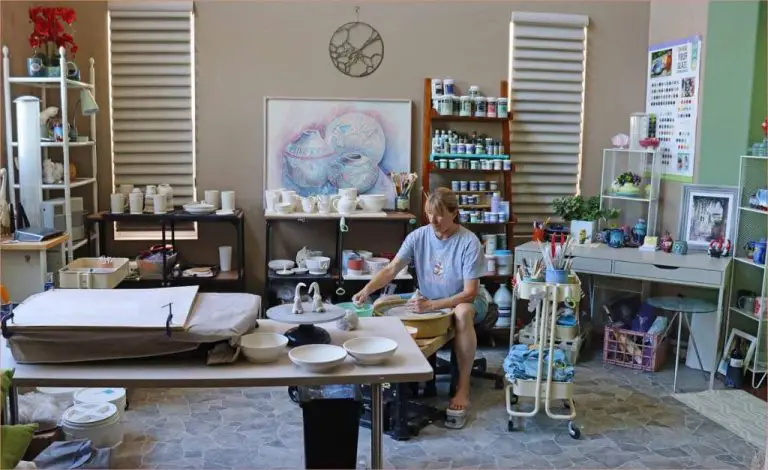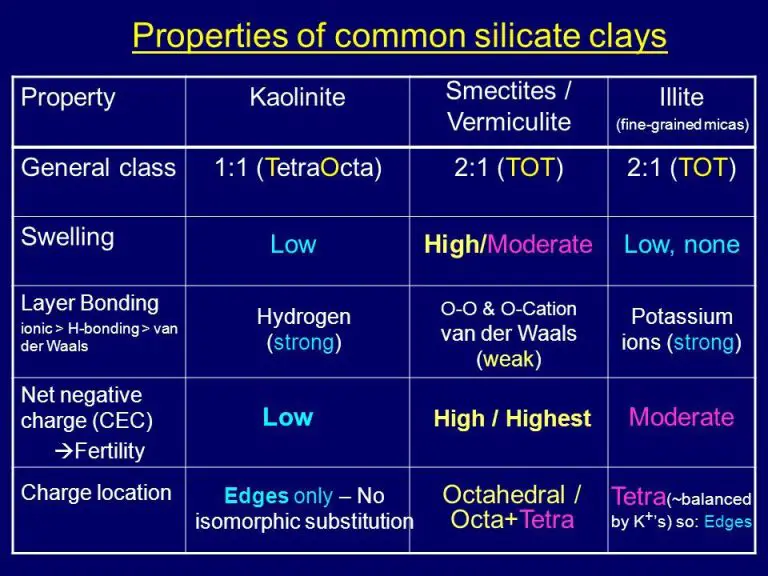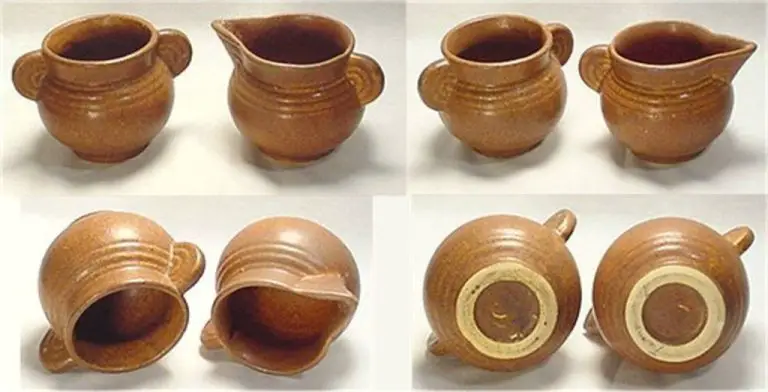Clay Varieties Explored: Choosing The Best For Your Creations
Clay is a versatile material that has been used for thousands of years to create pottery, sculpture, and other artwork. With so many types of clay to choose from, it can be difficult to know which is best for your specific project or purpose. This guide provides an overview of the major varieties of clay, including earthenware, stoneware, porcelain, and ball clay, and their key characteristics and ideal uses.
Understanding the different properties of clay bodies allows you to select the right type based on your goals. For instance, earthenware fires at lower temperatures and is more porous than stoneware or porcelain. Stoneware has excellent strength and durability. Porcelain can be fired to incredibly high temperatures to become glass-like and translucent. Ball clays help improve workability and plasticity when mixed with other clays.
In addition to distinguishing between clay types, the guide will cover best practices for preparing, working with, glazing, firing, storing, and recycling clay. With the right know-how, you can achieve success with your clay creations, from pottery throwing, to sculpting, to mold making. Let’s explore the incredible range of clays available for every application and skill level.
Clay Origins and Composition
Clay is formed from the geological weathering of rocks over millions of years. According to geology experts, clay originates when rocks like granite, feldspar and mica come into contact with water, ice, acids, and air. The minerals in these rocks begin to break down through chemical and mechanical weathering processes into very fine-grained particles less than 0.002 millimeters in size (1).
This weathering process allows the decomposed minerals to be transported by water or wind and deposited in river basins, lakes, deltas and coastal plains. Over time, these deposited minerals consolidate and compress into sedimentary rock layers known as shale. Further weathering turns shale into clay deposits like kaolinite, smectite and illite which can then be collected for use in pottery and ceramics (2).
The composition of clay depends on the original rocks it formed from but generally includes a mix of fine-grained minerals like quartz, mica, feldspar, and organic matter. The small size of clay particles gives it a high surface area and plasticity that allows clay to be easily shaped when mixed with water.
(1) https://www.reddit.com/r/geology/comments/i97doc/question_about_clay_formation/
(2) https://clayever.wordpress.com/2014/02/03/how-clay-is-formed/
Major Clay Types
There are four main types of clay that are commonly used in pottery and ceramics:
Earthenware
Earthenware is a low-fire clay that is porous and absorptive. It is fired at lower temperatures ranging from 1745°F to 2012°F (950°C to 1100°C) [1]. Earthenware has a coarse texture and can be decorated using glazes to make it less porous. It is one of the most accessible and versatile clays for beginners. Common uses include flower pots, tiles, and decorative sculptures.
Stoneware
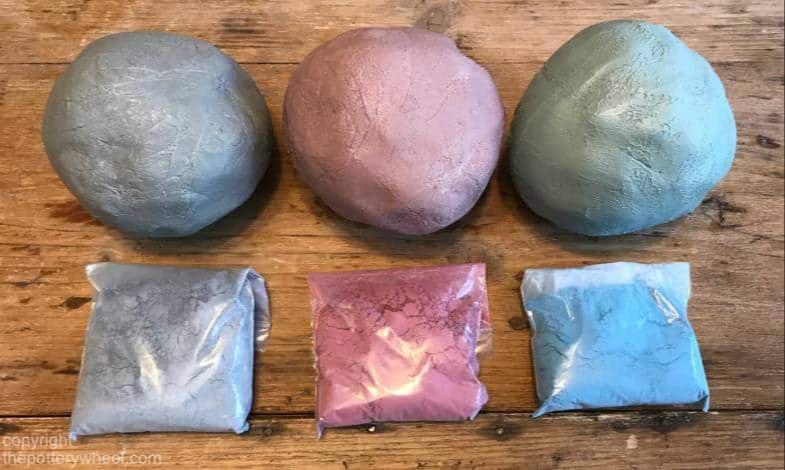
Stoneware is dense, hard clay that becomes vitrified and waterproof during firing. It is fired at higher temperatures between 2150°F to 2260°F (1160°C to 1225°C). [2] Stoneware has very low porosity, making it ideal for functional pottery like mugs, bowls, and casseroles that can hold liquids without leaking. It comes in various colors and textures.
Porcelain
Porcelain is a high-fire white clay that becomes glass-like when fired at extremely high temperatures over 2200°F (1200°C). It is highly vitrified, non-porous, and translucent. Porcelain has very high tensile strength to withstand sudden temperature changes. It is often used for tableware, sculptures, and decorative pieces.
Terracotta
Terracotta is an unglazed, low-fired earthenware clay. It has an iconic reddish-orange color due to the iron content in the clay. Terracotta has been used since ancient times to make pottery, bricks, and decorative sculptures. Modern uses include flower pots and garden ornaments.
Properties of Different Clays
The properties of clays can vary greatly depending on their mineral composition. Some key properties to consider when choosing a clay variety include:
Porosity
The porosity or density of a clay affects how absorbent it is and how much water it will retain. Porous clays like earthenware are more absorbent and prone to cracking when drying. Dense clays like stoneware have lower porosity and are less absorbent, making them better for functional pieces. According to the USGS, porosity is related to the clay’s particle size and firing temperature.
Firing Temperature
Clays are categorized by their maturation temperature or firing range. Lower-fire clays like earthenware mature at lower temps (1800-2100°F) while higher-fire clays like stoneware require higher temps (2200-2400°F). The firing range affects the clay’s strength, porosity, color, and glaze compatibility. As noted by Aboudi Mana (2017), higher firing temperatures result in increased densification and strength.
Color
The color of fired clay depends on its mineral content and any additives like iron oxide. Red and brown clays get their color from iron impurities. White clays are less impure. When fired, clays can turn shades like cream, pink, orange, red, brown, buff, grey, and black. Specific clay varieties are known for producing certain colors. For example, stoneware is valued for its grey to brown tones.
Plasticity
Plasticity refers to a clay’s malleability when wet and ability to hold its shape. Highly plastic clays with good workability include ball clay and stoneware. As explained by Kumari (2021), plasticity is influenced by the clay’s particle size distribution and water absorption capacity.
Best Uses for Each Clay
When selecting the right clay for your project, consider which variety will work best based on the clay’s properties and your desired outcome. Here are some guidelines for choosing the best clay for different techniques:
Sculpting
Oil-based clays like plasticine are ideal for sculpting detailed figures, characters, and sculptures. Plasticine is versatile, stable, and easy to sculpt intricate shapes that hold their form well when handled. Polymer clays like Sculpey and Fimo are also excellent sculpting clays that harden when baked. Their bright colors and ability to achieve fine details make them perfect for decorative sculptures.
Wheel Throwing
For throwing on the pottery wheel, high plasticity stoneware and porcelain clays are best. Their smooth, flexible nature makes them easy to center and shape into symmetrical vessels with thin walls. Porcelain in particular can be thrown into delicate wares like vases and teacups. Stoneware has high durability for functional items like mugs, bowls, and plates.
Hand Building
Hand building techniques like coiling, pinching, and slab construction call for earthenware, stoneware, and terra cotta clays. These have enough plasticity to be shaped without cracking or tearing. Low-fire earthenware works well for handmade sculpture, tiles, and decorative pieces. Mid-range stoneware and terra cotta are better for large, sturdy, freestanding works.
Preparing and Working with Clay
Properly preparing clay is an important first step before starting any pottery project. The main goals when preparing clay are to remove any air bubbles and achieve an even consistency throughout the clay. The most common techniques for preparing clay are wedging, slurry, and scoring.
Wedging involves repeatedly cutting, folding, and pressing the clay on a flat surface. This kneads the clay to distribute moisture evenly and remove air pockets How to Prepare Clay for Pottery. Wedging by hand takes practice but is the best way to feel when the clay has been properly prepared. There are also wedging tables that can help automate the process.
Slurry is a mixture of clay and water that acts as a glue. Brushing slurry onto two clay surfaces before joining them helps bind the pieces together smoothly. Scoring involves scratching or cutting grooves into the clay surfaces before applying slurry. This gives the slurry something to grab onto for a stronger bond How to Prepare Clay for Pottery.
Taking the time to properly wedge, slurry, and score clay makes the rest of the pottery process easier and helps create durable, professional results.
Firing and Glazing Considerations
Properly firing and glazing clay is essential for creating durable pottery. There are two main firing stages – bisque firing and glaze firing. Bisque firing refers to the initial firing of unfired clay to convert it from its raw state into a permanent ceramic material. This is done at a lower temperature, typically between cone 04 (1945°F) and cone 06 (2232°F) [1]. Bisque firing prepares the clay for applying glaze by making the surface more porous.
Glazes are made from a mixture of silica, fluxes, and stabilizers. Common glaze ingredients include silica, feldspar, kaolin, dolomite, and colorants like metal oxides. The glaze ingredients fuse together and bond with the clay body during the glaze firing, which is done at higher temperatures – usually between cone 4 and cone 10 (2134°F – 2381°F). The glaze melting point must be lower than the clay body to ensure proper bonding during glaze firing [2].
Choosing the right bisque and glaze firing temperatures is essential to achieve the desired results and prevent defects like cracking. Test tiles can help dial in the optimal temperatures. Cooling the kiln slowly after firing also helps prevent thermal shock. With careful firing and glazing techniques, beautiful and functional ceramic pieces can be achieved.
Storing and Recycling Clay
Properly storing unused clay is important for keeping it workable for future projects. Here are some tips for storing clay:
- Wrap unused clay in plastic wrap or store in an airtight plastic bag or container. This prevents the clay from drying out.
- For long term storage, add a damp paper towel to the wrapped clay to help retain moisture. Re-wet the towel periodically.
- Store clay in a cool, dark place. Temperatures should remain between 60-80°F.
- If clay does start to dry out, rehydrate it by kneading in drops of water until it regains a workable consistency.
Don’t throw away clay scraps! Extra bits of clay can be reclaimed by wedging them together with a bit of water. This recycles the clay and removes air bubbles. Rehydrated clay may need some restoration. Knead in some CMC or bentonite for plasticity.
Refer to this guide for more tips on long term clay storage.
Where to Buy Clay
When looking for pottery clay, you have a few options on where to purchase it. Two of the most common places to buy clay are through online retailers and local ceramic shops.
Online retailers like Gem Ceramic offer a wide selection of clay types that can be ordered and shipped directly to you. Buying clay online provides convenience and allows you to easily compare prices and brands. Many online shops sell clay in bulk at wholesale pricing.
Visiting a local ceramic store is another great option for purchasing clay. At these specialty shops, you can see and touch clay samples in-person before buying. Local stores also provide expertise from experienced staff who can recommend specific clay varieties best suited for your projects and skill level. Some even offer clay classes and open studio time.
Whether buying clay online or locally, be sure to factor in shipping costs if having it delivered. Also check if any specialty clays you require may need to be special ordered. Finding the right retailer that provides the types of clay you want at a reasonable price is key.
Conclusion
When choosing the right clay for your creative projects, the key is understanding the properties and ideal uses for the main types. Although clays share common origins and components, they can vary widely in their plasticity, strength, firing temperature, color, and texture. Keeping the characteristics of clays like earthenware, stoneware, and porcelain in mind will ensure you select the proper type for functional pieces like tableware or sculpture. Testing different clays with your techniques gives the best sense of how they handle. Whichever you choose, proper preparation, storage, and firing are vital for success.
In summary, knowing the origins and makeup of clays allows understanding their different qualities. While modeling and firing clays have overlap, subtle properties make each better suited for certain applications, from coiling pots to molding figures. Earthenware’s porous nature fits painting but not food, while stoneware and porcelain better withstand wear and heat. With practice, you can master handbuilding and wheel throwing with an array of clays. By considering your project needs and artistic goals, you can find the ideal clay for bringing your visions to life in 3D.

